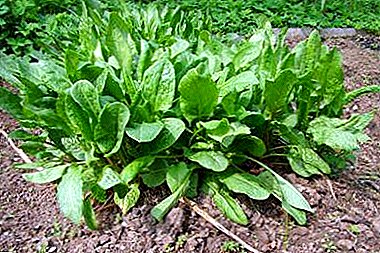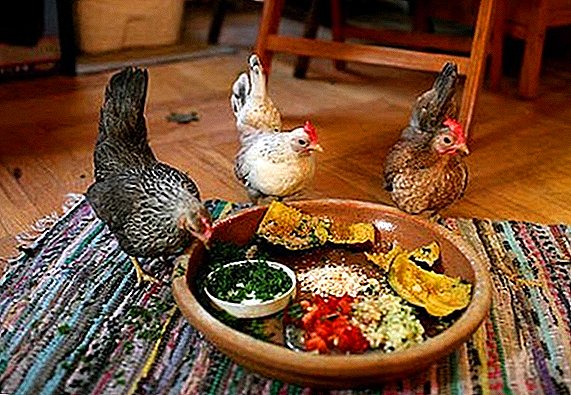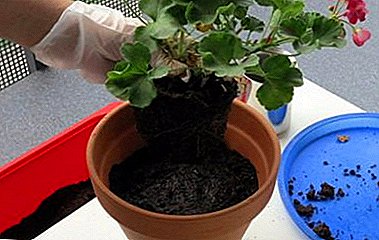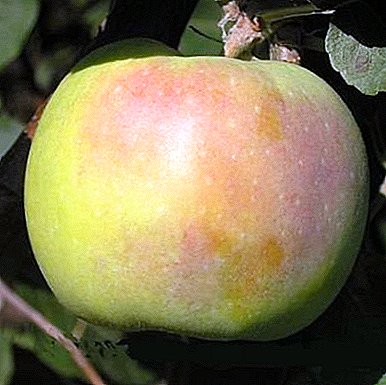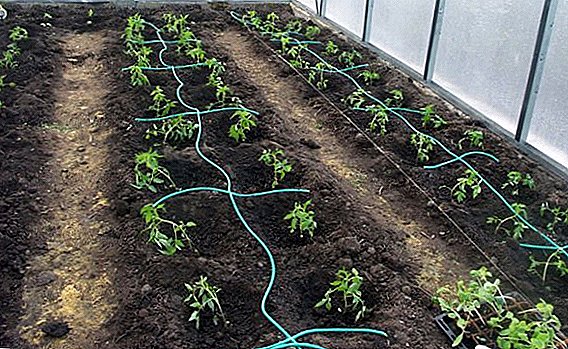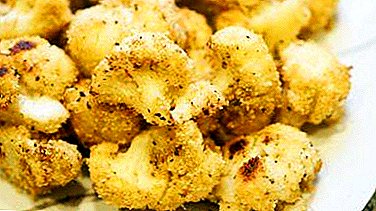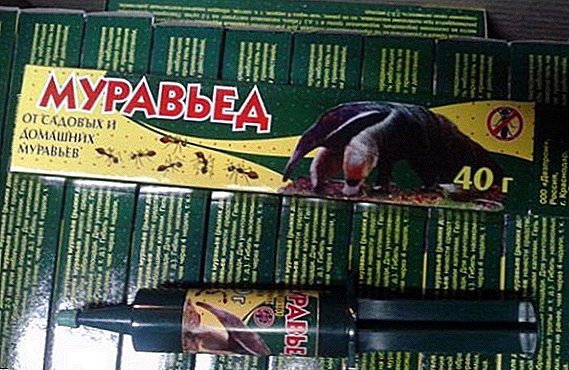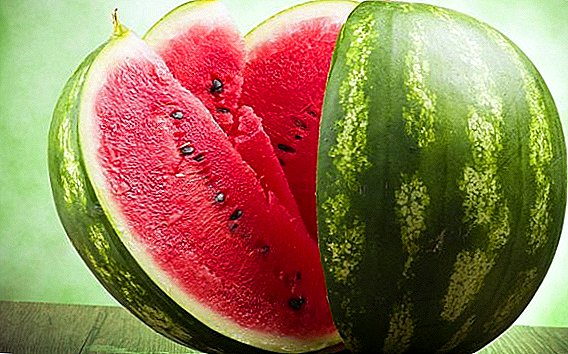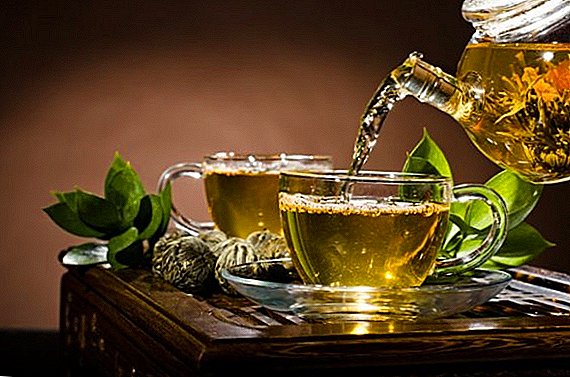 Of all the drinks known to mankind, tea is considered the most noble. It does not cause intoxication, refreshes, and the most sophisticated connoisseurs admire the exquisite tastes of its different varieties. In a broad sense, tea can be called any drink prepared by infusing leaves, herbs, pieces of fruit or berries on boiling water. Initially, this drink was used as a drug. Depending on the vegetable raw materials, the properties of tea and its purpose changed. This article will discuss methods of collecting and preparing tea raw materials, methods of brewing tea, its blends, indications and contraindications to the use of this drink.
Of all the drinks known to mankind, tea is considered the most noble. It does not cause intoxication, refreshes, and the most sophisticated connoisseurs admire the exquisite tastes of its different varieties. In a broad sense, tea can be called any drink prepared by infusing leaves, herbs, pieces of fruit or berries on boiling water. Initially, this drink was used as a drug. Depending on the vegetable raw materials, the properties of tea and its purpose changed. This article will discuss methods of collecting and preparing tea raw materials, methods of brewing tea, its blends, indications and contraindications to the use of this drink.
What leaves of plants
Virtually all cultivated garden plants are suitable for collecting leaves and their subsequent brewing. Theine and caffeine is a raw material does not contain, but it gives in boiling water tannins, sugars and vitamins that strengthen the immune system and stimulate digestion.
First of all, pay attention to the foliage of fruit and berry trees. These include quince, apple, black chokeberry, cherry, red cherry, pear, plum, sea buckthorn.
Sea buckthorn leaves have a huge impact on the health of the human body. Read more about the beneficial properties of sea buckthorn leaves.
Tea from such foliage turns out fragrant and with a large amount of tannins. It invigorates, tones, has an immunomodulatory effect. This drink softens mucous membranes, thins blood.  The second group includes raw materials from deciduous trees. This maple, linden, walnut. This tea is not to everyone's taste, but its benefits are undeniable. The drink strengthens the walls of blood vessels, cleans the liver, prevents the occurrence of age-related heart problems. It is recommended to drink to people, exhausted by a long illness, to those who suffer from overwork.
The second group includes raw materials from deciduous trees. This maple, linden, walnut. This tea is not to everyone's taste, but its benefits are undeniable. The drink strengthens the walls of blood vessels, cleans the liver, prevents the occurrence of age-related heart problems. It is recommended to drink to people, exhausted by a long illness, to those who suffer from overwork.  The third group is foliage from berry and nut bushes. This group includes red and black currant, raspberry, blackberry, filbert, dogwood, dog rose, gooseberry, sloe. This vitamin bomb, a drink from the leaves of shrubs is useful for hypovitaminosis. It heals the oral cavity, increases the tone of blood vessels, has a slight astringent effect and produces a cleansing effect.
The third group is foliage from berry and nut bushes. This group includes red and black currant, raspberry, blackberry, filbert, dogwood, dog rose, gooseberry, sloe. This vitamin bomb, a drink from the leaves of shrubs is useful for hypovitaminosis. It heals the oral cavity, increases the tone of blood vessels, has a slight astringent effect and produces a cleansing effect.  The last group, leaves of herbs and berries, includes the well-known mint, lemon balm, strawberries, strawberries, chamomile, dandelion. These teas help with disorders of the nervous system. They have a calming effect, eliminate problems with sleep, quickly quench thirst.
The last group, leaves of herbs and berries, includes the well-known mint, lemon balm, strawberries, strawberries, chamomile, dandelion. These teas help with disorders of the nervous system. They have a calming effect, eliminate problems with sleep, quickly quench thirst.
Did you know? Tea - Oriental drink, and its birthplace is China. The exact origin of the tea remains unknown. There is a version according to which the Chinese emperor Shen rested at lunchtime under a camellia tree when his servant brought him a cup of boiling water. Several camellia leaves accidentally fell into the cup. Out of curiosity, the emperor decided to try this gift of nature, and he liked the taste of the drink so much that the emperor has ordered him to regale him exclusively since then. It happened presumably in the 2700s BC. Tea from the leaves of camellia is prepared and today - this is black and green tea that we all know..
When to collect
The plant leaves reach their peak at the time of flowering, so be guided by it. The collection time for different climatic zones in this case will vary. On average, the collection begins in April and ends in the twentieth of July. Plan a collection for the first half of the day. Run it in clear weather immediately after the dew dries.  Collecting linden leaves In April-May, collect raw materials from all trees - fruit, fruit, and simple deciduous trees. The younger the leaves, the more they will contain tannins, causing a pleasant pronounced taste. Harvest time for shrubs and berries leaves begins in early June and lasts until early July.
Collecting linden leaves In April-May, collect raw materials from all trees - fruit, fruit, and simple deciduous trees. The younger the leaves, the more they will contain tannins, causing a pleasant pronounced taste. Harvest time for shrubs and berries leaves begins in early June and lasts until early July.
Important! In rainy weather, you should not collect raw materials for homemade tea. Foliage accumulates a large amount of moisture and becomes too fragile after drying, or deteriorates even during fermentation.
Part of the leaves will certainly leave on the bush, so that the plant can recover after harvest and give fruit. Gather grasses throughout July as they begin to bloom. Even if you plan to prepare a tea blend, collect the raw materials in separate bags or bags. Each plant needs separate processing.
How to dry
Drying in the open air takes from one to two weeks, depending on the raw materials. Before drying, you need to cut the cuttings from the leaves, as they deteriorate the quality of the raw materials, and go through the green mass, removing all the damaged leaves. The drying room must be dry, warm and well ventilated.  Drying raspberry leaves Spread plain paper on a flat surface. Newspaper will not work, as printing ink emits toxic substances. Distribute the prepared leaflets in an even thin layer.
Drying raspberry leaves Spread plain paper on a flat surface. Newspaper will not work, as printing ink emits toxic substances. Distribute the prepared leaflets in an even thin layer.
It is known that the leaves of many plants have powerful beneficial properties. Learn how to dry the leaves of raspberry, currant, blueberry, cherry and mint.
Every day, mix the leaves, swap the sheets so that the raw material dries out evenly. Do not leave the leaves for a long time without attention, so that they do not hit the mold. To check whether the product is ready, you need to bend several large leaves across the line of the midrib. If there was a distinct crunch, you can put the brew in storage.
Video: how to dry currant leaves for tea at home Another method of drying involves the use of the oven. This method is suitable for those who do not have enough time or space to dry the leaves in the traditional way. Preheat oven to +100 ° C.
Important! Avoid contact with the raw materials you are drying in direct sunlight. Under their influence, essential oils evaporate, the final product becomes tasteless and loses its saturated color.
Cover the baking sheet with parchment and place the leaves on it in one layer. Leave the oven door a quarter open. Dry the leaves at this temperature for one and a half hours, and then reduce the temperature by half and dry them until ready (30-40 minutes). Note that some of the nutrients in this treatment is lost.
Fermentation
This method of preparation of tea leaves improves the taste of tea. For him are selected the most juicy and clean leaves. Before fermentation, they should be cleaned of dust and small litter, but not rinsed with water, so as not to disrupt the natural microflora.  Fermentation of the leaves of the cherry The leaves, collected in the early maturity phase, are more amenable to fermentation and give the final product a richer taste. Fermentation begins as soon as the green mass is rolled up and the foliar juice protrudes.
Fermentation of the leaves of the cherry The leaves, collected in the early maturity phase, are more amenable to fermentation and give the final product a richer taste. Fermentation begins as soon as the green mass is rolled up and the foliar juice protrudes.
Did you know? Green and black tea is made from identical leaves. The difference in taste and appearance of these teas is caused by various ways of processing raw materials. For the production of black tea, raw materials are twisted and fermented, while green tea is simply dried and dried. Based on this, it can be argued that green tea - the drink is more natural and healthy, although many people like the more pronounced "black" taste.
The raw material is pre-dried, twisted through a meat grinder or twisted by hand and tightly placed in a container. It can be an enamel pan or a plastic food bucket. Strum the green mass with clean hands until a layer of 7-10 cm is obtained.  Place a clean ceramic plate on top and press it down with a yoke (a brick or a kilogram pack of cereal will do). Cover the container with a kitchen towel and leave the mass to ferment for 6-8 hours at a temperature of + 23-25 ° C. If the temperature is lower, the fermentation will not start, if it is higher, the deciduous mass will deteriorate.
Place a clean ceramic plate on top and press it down with a yoke (a brick or a kilogram pack of cereal will do). Cover the container with a kitchen towel and leave the mass to ferment for 6-8 hours at a temperature of + 23-25 ° C. If the temperature is lower, the fermentation will not start, if it is higher, the deciduous mass will deteriorate.
The finished mass must be crushed with kitchen scissors, if you did not pass it through a meat grinder before fermentation. The pre-crushed sheets themselves fall apart into small lumps. Fermented tea leaves should be spread evenly over a baking sheet covered with parchment and dried in the oven for one and a half hours at a temperature of +60 ° C.
Video: Fermentation of a currant leaf
Twisting
Before you send the leaves for fermentation, you need to destroy their structure and release the juice on the surface. To do this, twist in a meat grinder and twist by hand. The second method will require more time, but the tea will end up with exquisite leafy, rather than granulated.
Important! If you do not have time to watch out for wilting, spread the foliage in a thin layer on a towel and roll it up. Put a towel in an enamel pot and place it in a warm place. Thus folded raw materials wither in five to six hours instead of the usual twelve.
If you use a meat grinder, then install a large mesh on it, otherwise the granules will break up into small particles when dried. If you plan to twist the leaves by hand, then take 7-10 leaves, folded in an even pile, and forcefully roll them between your palms. You will get a flat dense roll. Process the remaining leaves in the same way. 
Wilting
This is the preparatory stage, which allows you to remove excess moisture from the green mass. At this stage, chlorophyll begins to break down, the concentration of essential oils and tannins increases, which will give the tea a rich taste. Spread a cotton kitchen towel on the work surface, overlap the leaves on it and leave them to wilt for 10-12 hours.
Did you know? Tea leaves, as well as the tradition of brewing tea, entered Europe along with other oriental goods through Portugal. It was this country on the edge of Europe that once laid the maritime trade route to China and began to import unusual sorts of this drink. Remarkably, the most “tea-house” country in Europe, England, had no idea how to handle tea leaves. When the camellia leaves first came to the cooks of the royal family, they added them to the meat salad and, without a shadow of a doubt, filed them at the royal table.
If the humidity is high outside, it may take up to a day to wither. Determining the readiness of raw materials is simple: fold in half one of the large leaves. If it crunches, leave the mass to fade for a while. If the body of the sheet is supple, then you can proceed to the next stage of preparation. 
Cooking tea from the leaves
You can brew leaves of only one type, or you can make a tea blend. Boil water in the kettle until bubbles appear, pour it into the teapot, add tea leaves at the rate of 1 tsp. leaves to 250 ml of water. Cover the teapot with a lid and leave to infuse for 5-7 minutes. Diluting such an infusion with water is not necessary, but if the tea leaves turned out too strong, dilute it in a cup with warm water in a 1: 1 ratio.
Recipes
There are many herbal and leaf teas, but among them there are especially popular recipes.
Blooming Sally
It is made from raw materials of Kipriya, also known as Koporsky tea. Its unique taste properties are due to the long fermentation process (up to 48 hours) and high juiciness of the raw materials. 
Ingredients:
- Ivan Tea leaves - 2 tsp;
- hot water - 0.5 l.
Ivan-tea - a storehouse of vitamins and trace elements. You will probably be interested to know when to collect and how to make willow tea, as well as its benefits for the female body.
Cooking:
Put a teapot in the teapot, fill it with boiling water and close the lid tightly. Leave the tea infused for ten minutes. Strain through a sieve. This infusion can be drunk with dried fruit, homemade cakes and honey. 
Blend of garden leaves and herbs
To experiment it was easier, start to prepare a mixture of two or three tastes. When you understand which leaves give the best taste in the mix, go to the four- and five-component blends.
Important! Before curling, the dried mass can be put in the refrigerator for an hour and a half, and then allowed to thaw. The mass processed in this way will give away a lot of juice, and the fermentation process will be more intensive.
Ingredients:
- mint leaves - 2 tsp;
- strawberry leaves - 0.5 tsp;
- raspberry leaves - 1 tsp;
- apple leaves - 1 tsp;
- hot water - 1 l.

Cooking:
Pour boiling water into the pot. Add mint, leave under the lid for one minute. Add leaves of raspberry, apple and soak under the lid for two minutes. Add leaves of strawberry, brew for another two minutes. Strain the resulting infusion, dilute with hot water in a 1: 1 ratio before drinking.
From the leaves of wild rose
When chilled, this tea has the best taste. In addition, it is better to insist on boiling water, and on hot water, in order to preserve vitamin C and get the maximum benefit.
To get the maximum concentration of nutrients in raw materials, consider how to properly dry hawthorn and wild rose hips at home.
Ingredients:
- wild rose leaves - 5 tsp;
- hot water - 1 l.

Cooking:
Put the brew in the teapot. Fill with hot water and leave under cover for half an hour. Strain through a strainer, cool and serve with dried fruit.
Contraindications and harm
For all its benefits, leaf teas have a number of contraindications. Infusions with thyme, nettle and maple should be used with caution in lactating and pregnant women. People with a tendency to allergic reactions should beware of dogwood and rosehip.
Did you know? Down to dAbout the beginning of the 20th century, all tea was sold in cans. The situation has changed a happy occasion. One of the American suppliers of tea by the name of Sullivan began packing tea leaves into small silk bags to save on tin packaging. One of Sullivan's clients inadvertently dropped such a bag in a kettle with boiling water and saw that the tea infused even through silk fabric. So, in 1903, a patent appeared on the use of tea bags.
Those who suffer from a weak stomach, it is not recommended to use teas based on walnut, hazelnut and chokeberry too often. If you plan to drink tea from the leaves of a small child, consult a pediatrician in order not to harm the baby. 
Storage
First of all, make sure that the storage tank is minimally permeable to air. In a relatively sealed package, welding will retain its properties longer. Porcelain and ceramic dishes with tightly fitting hermetic lids, polypropylene bags with string fastener along the top edge are suitable for this purpose.
Familiarize yourself with the beneficial properties and contraindications of sausep and karkade tea.
If you plan to store small portions of various tea leaves, then put them in separate paper bags and close in a large sealed bag. The room in which you will store the teas should be dry, warm (+ 18-20 ° C) and dark. Every three months, take out your supplies and air them, pouring in new packages.  Tea from the leaves of garden plants is guaranteed quality products that you can prepare yourself. Choose plants from which you will collect raw materials, collect leaves in the early maturity phase, carefully reassemble them and dry or ferment for the best taste.
Tea from the leaves of garden plants is guaranteed quality products that you can prepare yourself. Choose plants from which you will collect raw materials, collect leaves in the early maturity phase, carefully reassemble them and dry or ferment for the best taste.
Store tea leaves in suitable conditions for this, so that it retains the maximum taste and benefit. Drink a cup of healthy homemade tea every day and then you will stay healthy even in the winter period of hypovitaminosis.
Feedback from users on how to dry the leaves of plants for tea




